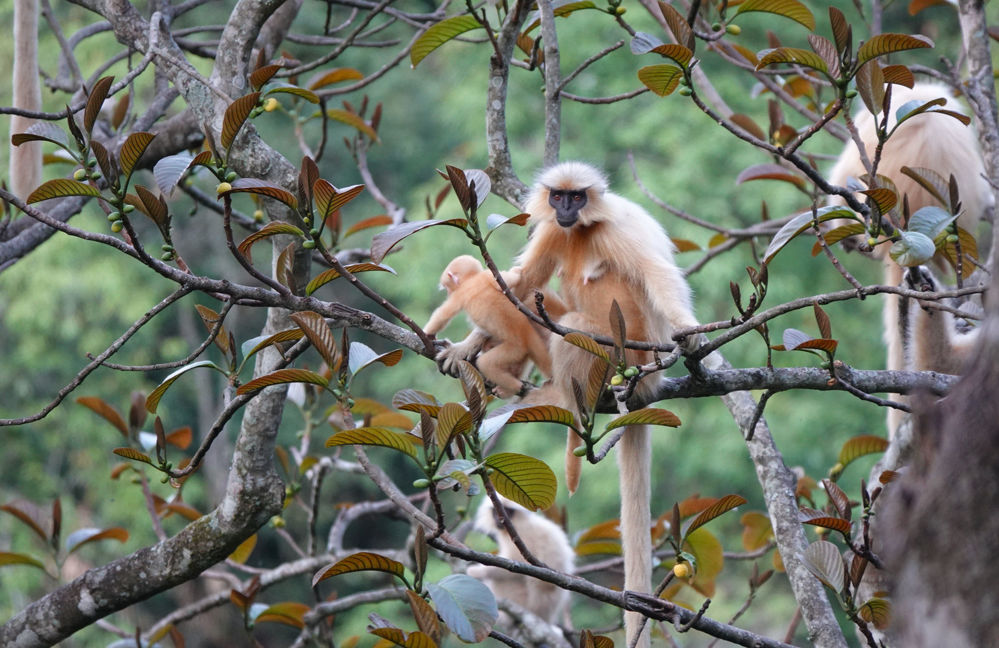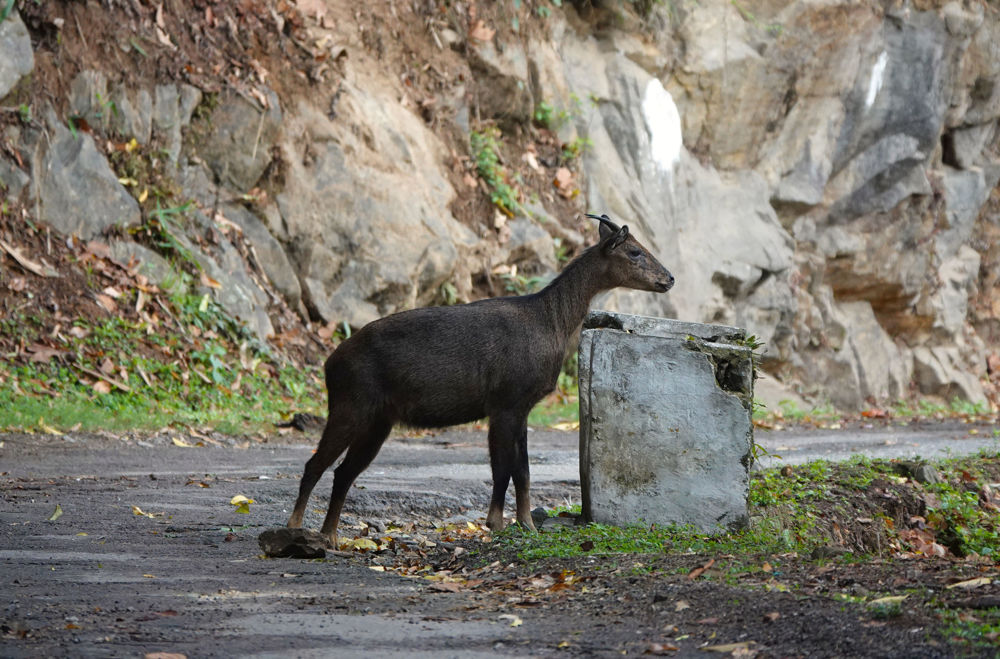Departure Date: April 1 - 18, 2025
Compiled By: Max Breckenridge
Trip Leaders: Max Breckenridge, Local Leader
Toll Free: 800.328.8368
Phone: 512.328.5221
Bhutan 4/1/2025-4/18/2025

It is always a thrill to leave behind the incessant hustle and bustle of New Delhi (where our tour officially begins) and arrive into the beautifully peaceful and scenic Paro Valley. This year especially so, with a revamped itinerary ahead of a great group of folks getting to experience this wonderful country for the first time. We were dutifully greeted by our two excellent guides, Sangay and Chimi, who alongside our capable driver and camp crew, would accompany us throughout our exploration of Bhutan. Our day around Paro, and along the Paro Chu (“chu” – river) yielded us great looks at alpine Black-tailed Crakes, Himalayan Buzzard, Little Buntings, Plumbeous and White-capped redstarts plying the pebbled river-edges, and the great prize of the enigmatic Ibisbill.
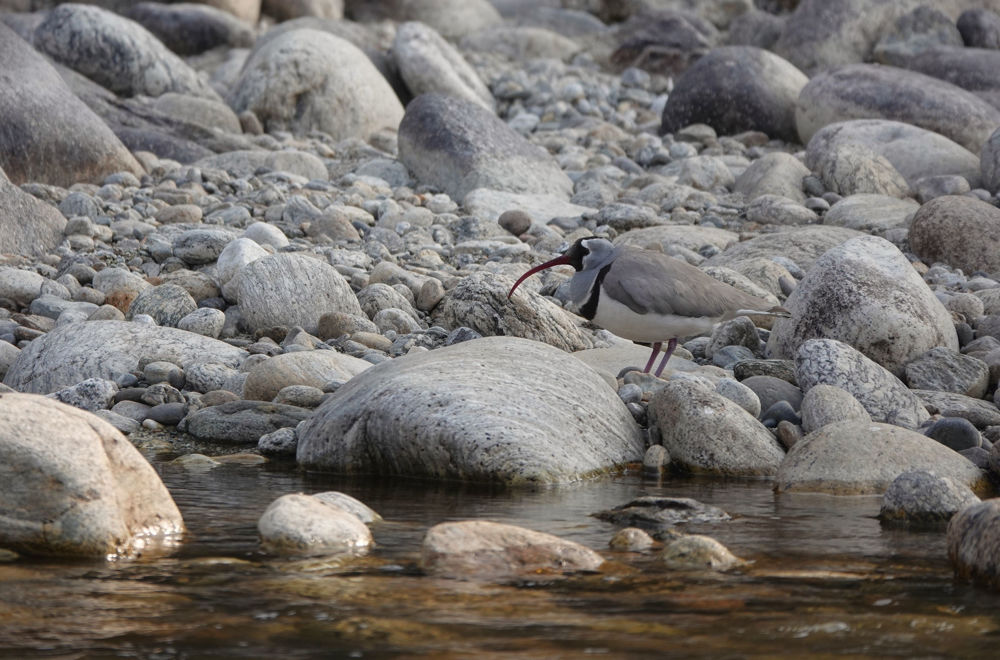
Ibisbill camouflage wonderfully against the gray river stones typical of alpine Bhutan - Max Breckenridge
The next day we enjoyed a fantastic morning up on the mountain pass of Chelela before descending into the adjacent Haa Valley, where we stayed in comfortable lodgings overlooking the town of Ha. We had beautiful clear skies up on the pass, with the birding punctuated by excellent looks at a variety of Himalayan specialties: Blood Pheasant, Himalayan Monal, Kalij Pheasant, Himalayan White-browed Rosefinch, Collared Grosbeak, White-browed Bush-Robin, and a bonus flock of Red-throated Thrushes staging before their migration to Central Asia. Cute Gray-crested and Rufous-vented tits were located in the firs, and a tiny Hodgson’s Treecreeper was another alpine specialist we were fortunate to find. A late afternoon walk down along the river in Ha revealed yet more Ibisbills.
From Ha, we began the much-anticipated ascent to the pass of Tergola and then down into the Gakiling Valley in the province of Samtse. Both of these areas have been very infrequently birded, and our group was more than likely the first international contingent to visit this isolated region of western Bhutan. Our time in this region was well justified, with a fantastic two days of birding and two nights of camping in the tranquil locality of Gakiling. The forests along the road west of Tergola were stunning and afforded some wonderful birding, while down along the river in the more sub-tropical forests of Gakiling we enjoyed a totally different set of species, including multiple sightings of stunning Rufous-necked Hornbills. After just scratching the surface of this exciting region of Bhutan, it was, sadly, soon time to move on, and after a fair drive through dry, alpine farming country, we eventually reached civilization in the capital, Thimphu.
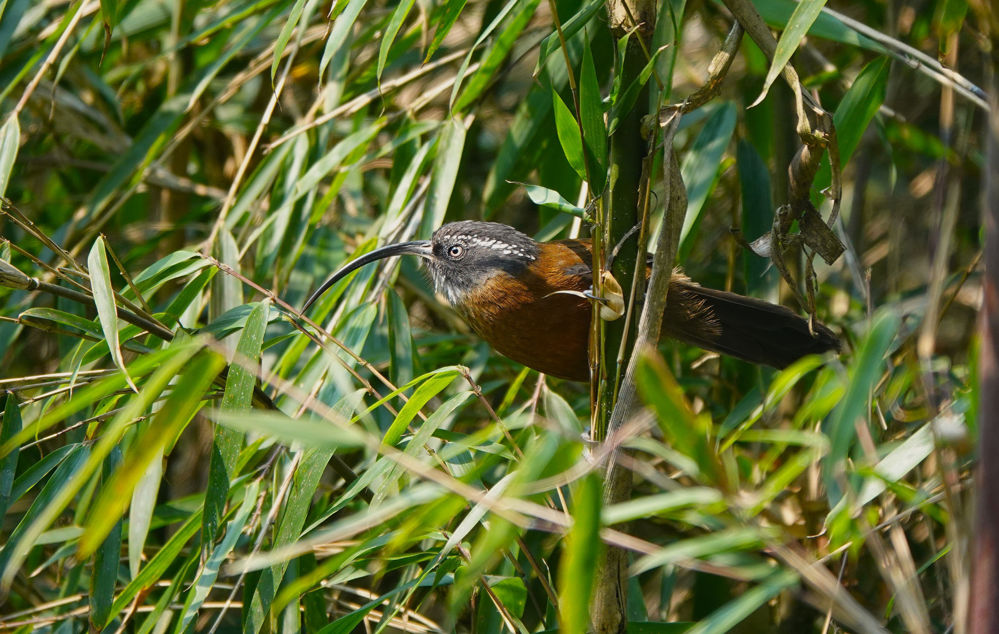
Slender-billed Scimitar-Babbler is a captivating inhabitant of alpine bamboo stands - Max Breckenridge
Our full day around Thimphu began with an excellent morning exploring the lower slopes of the Cheri Valley in the Jigme Dorgi NP. Hume's Bush-Warblers, Brown Parrotbill, Rufous-bellied Woodpecker, and a sighting of the very rare and elusive Long-billed Thrush were highlights. The afternoon was spent first at the Royal Takin Sanctuary, allowing for close-up views of these impressive bovids—a species that is very difficult to see in the wilds of Bhutan. A healthy dose of souvenir shopping in downtown Tingtibi was also a nice change.
The next morning we crossed Dochula pass, where the much-desired Fire-tailed Myzornis and Great Parrotbill were located without much difficulty, before descending to another lovely field breakfast at the Royal Botanical Gardens. A stroll around the gardens after breakfast proved very birdy with the songs of several cuckoo species ringing out over the richly-forested slopes. That afternoon, down in the drier Punakha Valley, we toured the incredible Punakha Dzong situated at the convergence of two rivers (the Mo Chu and Po Chu), which form the Puna Tsang Chu—home to some of the last remaining White-bellied Herons in the world.
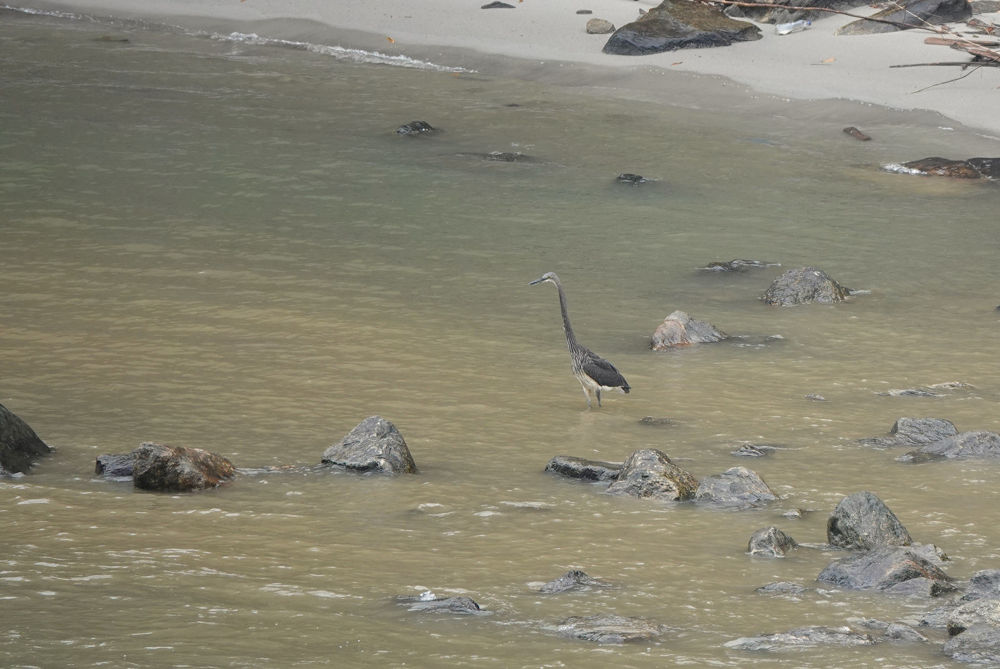
White-bellied Heron - one of the rarest birds in the world. We were incredibly fortunate to have views like this - Max Breckenridge
We woke to rainy conditions the following morning, but managed to have a field breakfast and productive session of riverside birding in between showers; Dusky and Thick-billed warblers were on passage, as were a selection of waders and waterfowl, several stunning Citrine Wagtails, and a surprise pair of Brahminy Starlings mixing with Chestnut-tailed Starlings (only the second or third record for Bhutan on eBird). The rest of the day was spent following the Puna Tsang Chu south through a dramatic valley. Heavy showers made life difficult, but we persisted, checking certain stretches of the river for White-bellied Heron—our primary target here. A couple of sightings of beautiful Great Hornbills perched beside the road certainly helped keep our spirits up! As we moved further south, things were starting to look grim on the heron front. That was, until at the last accessible point along the river, a quick stop to peruse a local honey stall allowed me one last chance to scan the river, and there it was! One of the rarest birds in the world was standing on the opposite bank and allowed us amazingly close views as it stalked the riverbank slowly for the next half hour—persistence and a bit of good luck are always the key!
After an evening enjoying the wonderful view over several valleys from our hotel at Damphu, we departed early the next morning for the mid-elevation pass of Darachu. Here we enjoyed some wonderful birding along the roadside, with close views of a tiny but very vocal Rufous-throated Wren-Babbler a definite highlight. From the pass we wound downhill towards the lowlands along the Indian border. The vegetation and temperature certainly began to change, but it was a welcome shift, as were the few stretches of straight road! We rolled into the border town of Gelephu in the early afternoon, and some of us spent an enjoyable late afternoon session birding around the sewage works on the edge of town.
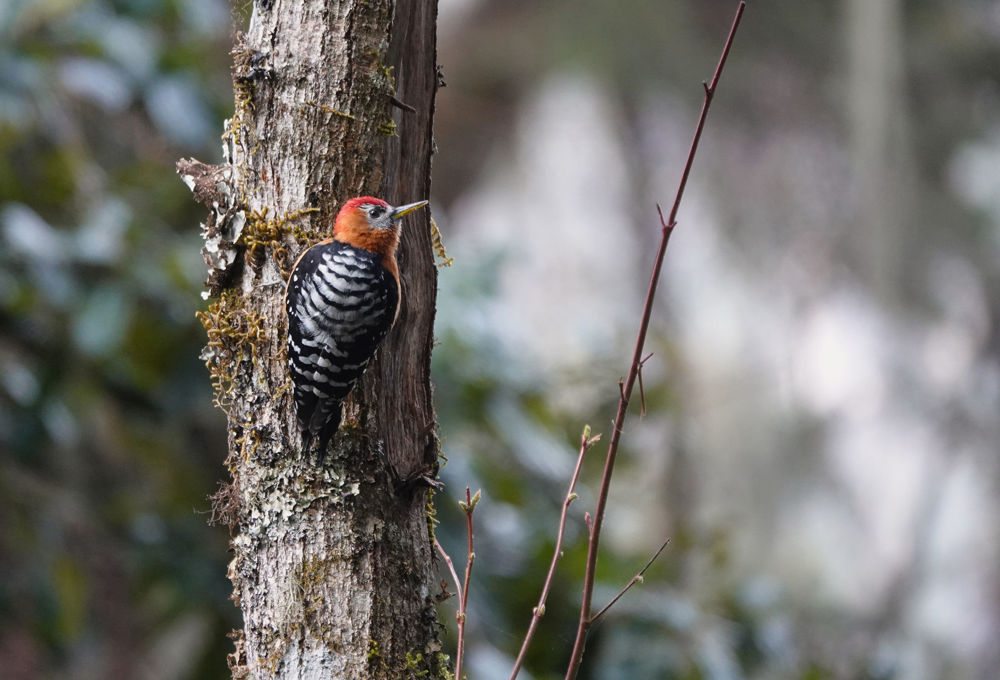
Rufous-bellied Woodpecker is a fantastic representative of the family - Max Breckenridge
Our short time in the lowlands had been productive, but it was time to make for the hills once again, and so we began the drive north towards Tingtibi the next morning. We started with a wonderfully scenic breakfast stop looking back over the lowland plains extending into India towards the Brahmaputra. Gray Peacock-Pheasants cackled from the slopes below, as several species of barbets called continuously, White-throated Needletails scythed overhead, and a migrating flock of Booted Eagles were an unexpected sighting.
Around the small locality of Tingtibi we enjoyed a wonderful, if slightly damp, morning of birding along the road through some extensive patches of bamboo—home to several specialized birds we managed to locate. White-hooded Babbler, several large flocks of cute Pale-billed and White-breasted parrotbills, a raucous Chestnut-winged Cuckoo, and the wonderful White-browed Scimitar-Babbler, among many others. In the afternoon, a pleasant stroll along the road south of town began with a trio of gorgeous Slaty-backed Forktails, a very busy mixed flock, and ended with a wonderful encounter watching a large troupe of Gee's Golden Lutung—a large species of monkey with impressively long tails and beautiful golden pelts.
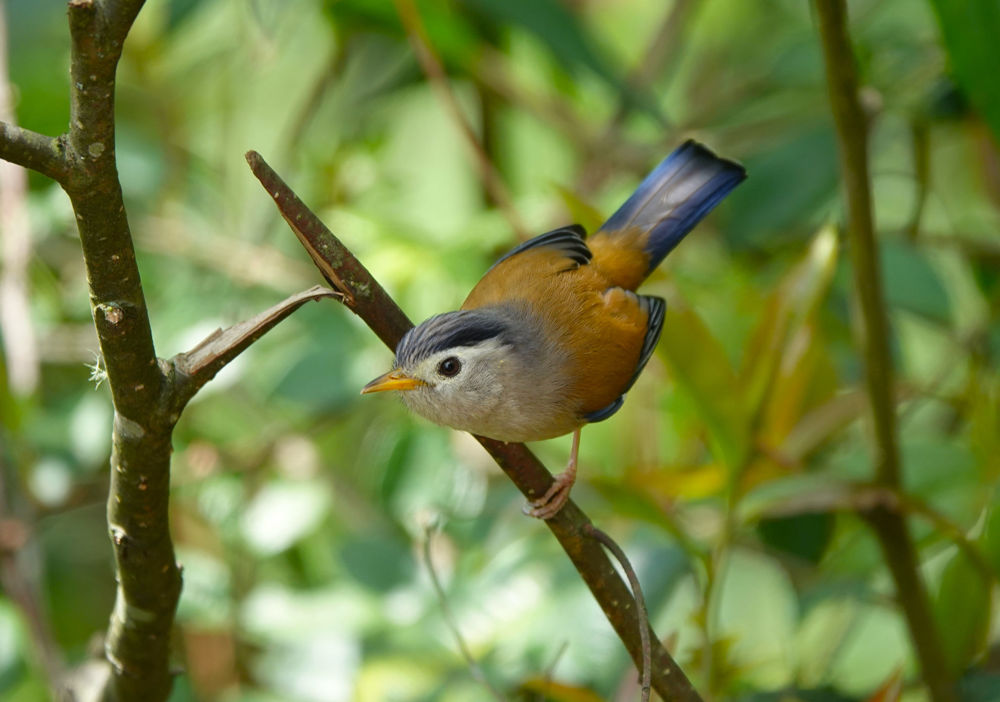
Blue-winged Minla can be delightfully inquisitive at times - Max Breckenridge
Leaving Tingtibi behind, we headed towards Trongsa, but not before a morning along the old Zhemgang Road, where we had one particular target squarely in mind. After another wonderful field breakfast, and amazingly protracted views of a Goral along the roadside, we began birding uphill towards a low pass. A large flock of Spot-winged Grosbeaks drying off in the trees after a morning bath was very welcome, but we were soon back on track and heading further uphill. At one particular point along the road, we searched through a mixed flock, and then there it was! A brief sighting, then a second, they seemed to be investigating a ball of dried vegetation up the slope. A tense wait for them to reappear—then there they were—a pair of Beautiful Nuthatches! We were incredibly fortunate to stumble across a pair with an active nest, and felt very privileged to be able to watch them bring food in every few minutes, allowing for wonderful repeat views.
After a lovely night in Trongsa, with some pleasant birding close to our hotel, we began heading west and back towards Paro. However, we still had one more mountain pass on the agenda, and so we made our way first towards Pelela and the nearby Phobjika Valley. Along the way, some roadside birding yielded several scarcer species, most notably a pair of striking Golden-breasted Fulvettas, a flock of Tibetan Serins, and a confiding Russet Bush-Warbler. Somewhere along the way, our local guide Chimi casually mentioned to me that there may be five Black-necked Cranes still wintering in the Phobjika Valley. Somewhat stunned, as the cranes have usually left for their summer grounds by late March, I made the call to head straight for the valley in the hope that the report was genuine. As it turned out, it was, and we were soon watching a family party of these majestic and range-restricted alpine cranes grazing at close range! It was a hugely unexpected highlight, but it was not to be the most remarkable thing we would witness that day. After a quick check-in to our lovely timber lodgings (complete with fireplaces) we were back on the bus and heading up to Pelela. I often find dreary afternoons to be good pheasant weather, and today was no exception. We started first with a regal male Himalayan Monal perched in full view, before Gideon spotted our first female Satyr Tragopan! However, it only got better from there, as a male was soon spotted ahead of us, giving wonderful views crossing the road. But that was all a prelude to our final sighting of the day—a pair of tragopans on the road in full view, with the male strutting around and eventually even displaying to the female! It is a display that is hard to describe, other than being almost alien-like, and instantly memorable. What an unforgettable day!
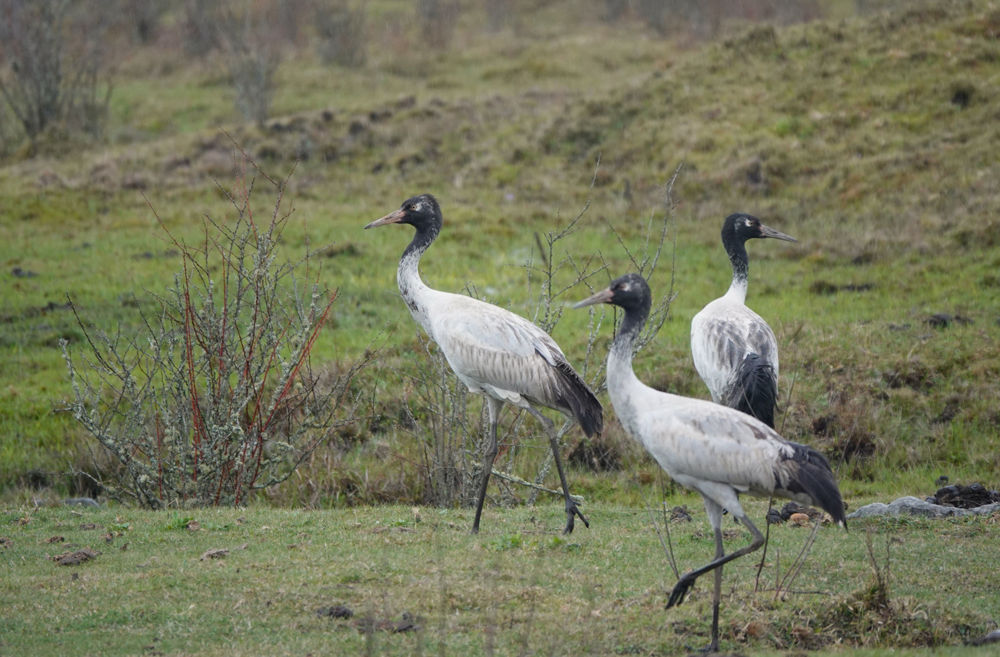
Black-necked Cranes! What an amazing surprise - Max Breckenridge
Our final full day in Bhutan was mostly a travel day, enjoying the wonderful scenery and reminiscing on what had been a really exceptional trip. We had a wonderful lunch at Dochula with several other upcoming guides and representatives from our local agent in Bhutan, before eventually rolling into Paro in the late afternoon. One last Druk Lager was sampled that evening around dinner as we all reflected on a great tour among a group of newfound friends.
A special thanks to our guides Katsho Sangay and Chimi Dorji, amazing driver Tenzin, the whole camp crew, and Gangri Tours for putting everything together. I look forward to returning!
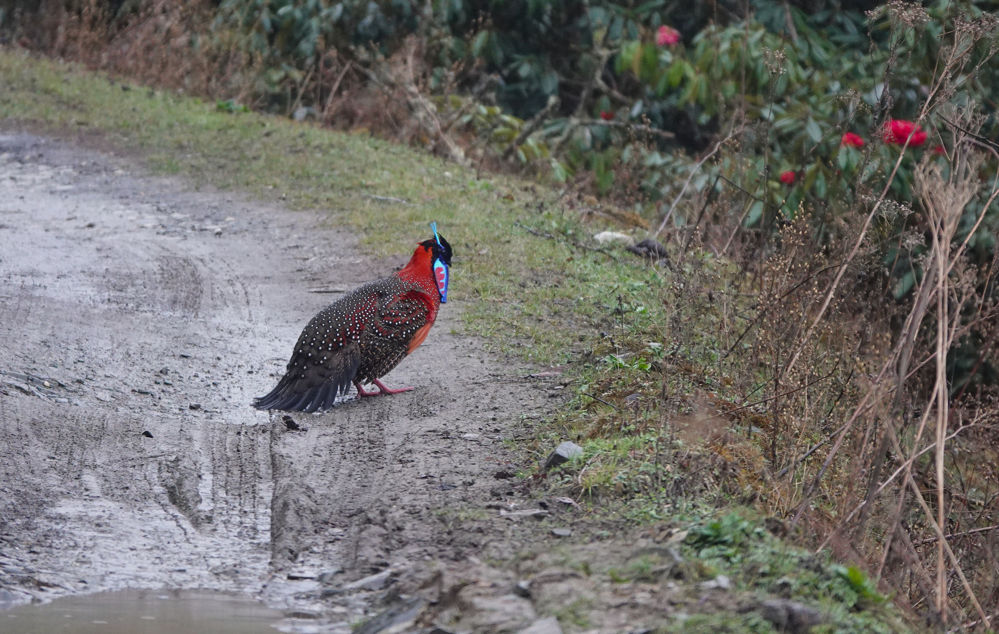
Satyr Tragopan displaying to a female in full view. It doesn't get much better than that - Max Breckenridge
A complete list of the birds recorded on our trip can be found at:
https://ebird.org/tripreport/355125
Read the description for the next departure of this tour.
View Max Breckenridge's upcoming tour schedule.
ITINERARY:
Day 1: April 3, 2025: (AM) DEL-PBH, Paro; (PM) Paro Valley
Day 2: April 4, 2025: (AM) Chelela; (PM) Haa Valley
Day 3: April 5, 2025: (AM) Tergola, Gakiling Road; (PM) Gakiling Road, Gakiling
Day 4: April 6, 2025: (AM) Gakiling; (PM) Gakiling Rd
Day 5: April 7, 2025: (AM) Gakiling Rd; (PM) Thimphu
Day 6: April 8, 2025: (AM) Cheri Valley/Jigme Dorji NP; (PM) Thimphu – Takin Sanctuary
Day 7: April 9, 2025: (AM) Dochula; (PM) Punakha Dzong
Day 8: April 10, 2025: (AM) Puna Tsang Chu; (PM) Damphu
Day 9: April 11, 2025: (AM) Darachu; (PM) Gelephu – STW
Day 10: April 12, 2025: (AM) Gelephu-Tsirang Road; (PM) Tamala, Tingtibi
Day 11: April 13, 2025: (AM) Goling; (PM) Tingtibi
Day 12: April 14, 2025: (AM) Zhemgang; (PM) Trongsa
Day 13: April 15, 2025: (AM) Trongsa, Chendebji; (PM) Phobjika Valley, Pelela
Day 14: April 16, 2025: (AM) Pelela; (PM) Dochula, Paro
Day 15: April 17, 2025: (AM) PBH-DEL; (PM) Delhi

